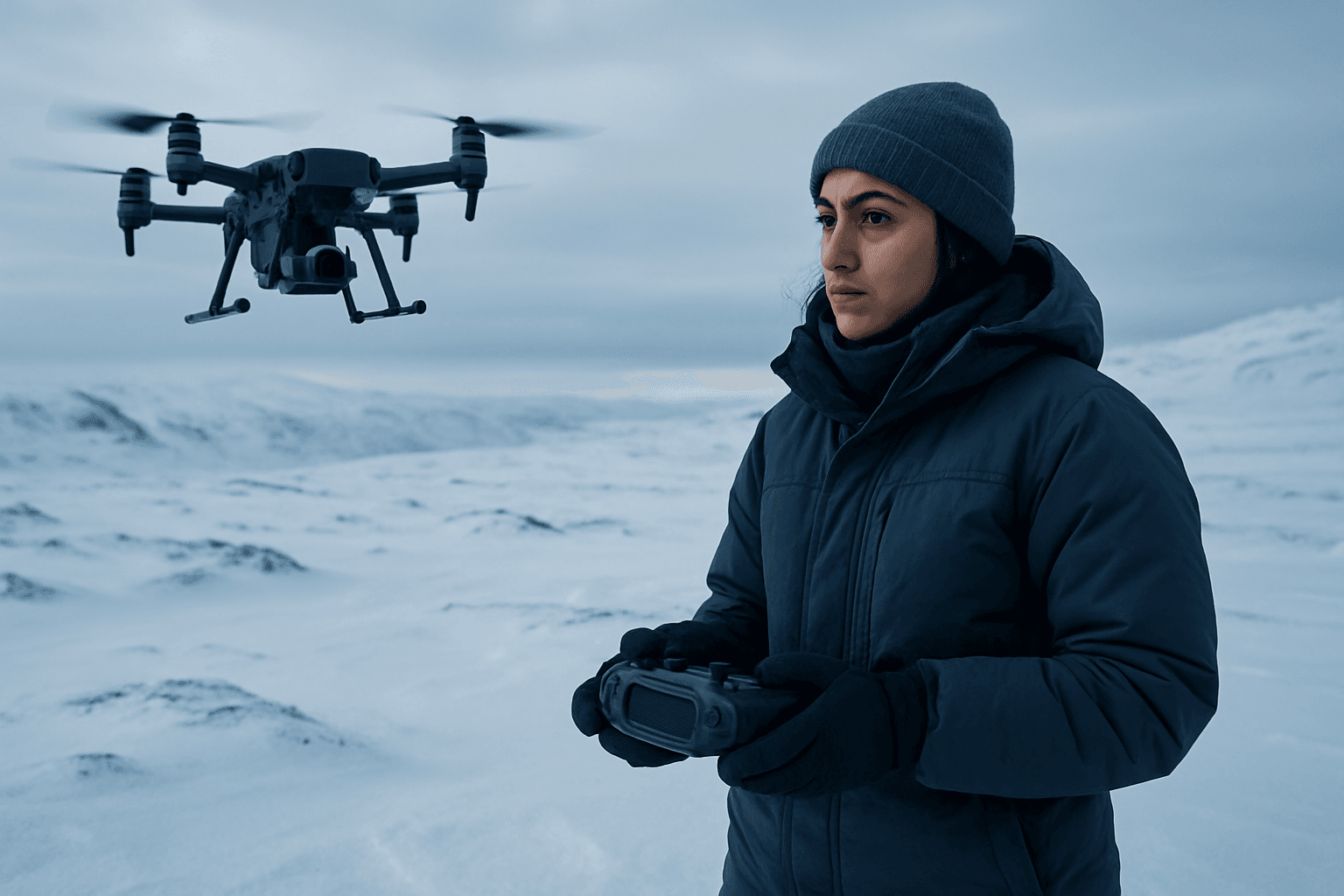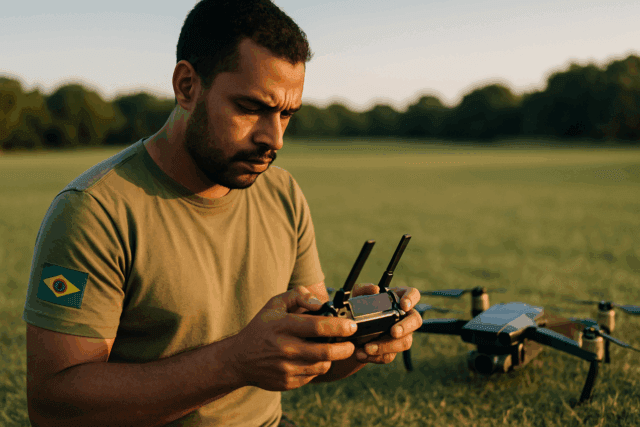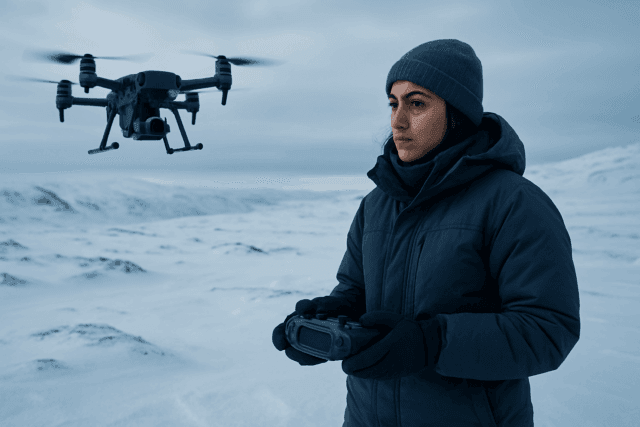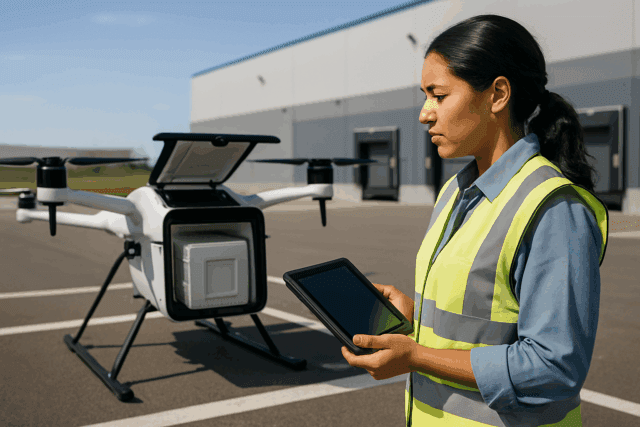Drone delivery services, once a futuristic concept, are rapidly becoming a reality, promising speed, efficiency, and expanded reach in logistics. However, the seamless operation of Unmanned Aerial Vehicles (UAVs) for package delivery faces a formidable adversary: extreme temperatures. Both scorching heat and bitter cold present unique and significant challenges that can degrade performance, jeopardize safety, and limit the reliability of drone delivery networks.
From battery degradation to material brittleness and sensor malfunction, understanding and mitigating the impacts of severe thermal conditions is paramount for the widespread adoption and success of drone delivery. As companies like Amazon, Wing, and DJI push the boundaries of drone capabilities, addressing these environmental hurdles is a critical area of innovation.
The Deep Freeze: Challenges of Drone Delivery in Extreme Cold
Operating drones in frigid conditions introduces a cascade of problems, primarily affecting battery performance, material integrity, and the risk of icing.
Battery Performance in Cold Weather
Lithium-polymer (LiPo) batteries, commonly used in drones, are highly sensitive to cold temperatures. As temperatures drop, the chemical reactions within the battery slow down, leading to several critical issues:
- Reduced Capacity and Shorter Flight Times: Cold weather significantly reduces the battery’s effective capacity, meaning a fully charged battery will deliver a fraction of its normal power output and result in dramatically shorter flight durations. Flight times can be cut in half in cold conditions.
- Voltage Sag and Power Failure: Internal resistance in the battery increases in the cold, making it harder for the battery to deliver power. This can cause voltage drops and, in extreme cases (e.g., below -10°C or 14°F), lead to sudden power failure and uncontrolled landings.
- Slower Charging: Cold conditions can also lengthen the time it takes to charge a battery and may shorten its overall operational lifetime if it becomes a regular occurrence.
Material Brittleness and Structural Integrity
Many materials used in drone construction, particularly plastics, become more brittle and rigid in freezing temperatures. This increases the risk of mechanical damage, especially during impacts or even rough handling. Fluctuating temperatures can also cause materials to expand and contract, potentially compromising structural integrity over time.
Icing and Aerodynamic Impact
One of the most dangerous cold-weather hazards is ice accumulation on drone surfaces, such as wings and propellers.
- Reduced Lift and Increased Drag: Even a thin layer of ice significantly alters the aerodynamic profile, reducing lift, increasing drag, and adding considerable weight. This can cause stability issues and even catastrophic loss of lift, making it impossible for the drone to remain airborne.
- Uneven Weight Distribution: If ice breaks off unevenly, it can cause vibrations from dynamic instability, placing high stress on the rotors.
- Propeller Vulnerability: Propellers are particularly vulnerable to icing due to their high speeds relative to the outside air and small chord lengths.
Electronic and Sensor Malfunctions
Cold temperatures can slow down the function of electronic components in DC systems, minimally degrading overall flight duration. Rapid temperature changes, like moving a drone from a warm car to cold air, can also cause condensation on lenses and electrical units, potentially leading to short circuits or gimbal issues.
The Blazing Heat: Challenges of Drone Delivery in Extreme Hot Temperatures
High temperatures pose an equally formidable, though different, set of challenges for drone operations.
Battery Performance in Hot Weather
While cold slows chemical reactions, heat accelerates them, leading to:
- Faster Power Depletion: High temperatures quicken the battery’s chemical processes, leading to faster power depletion and significantly shorter flight durations.
- Reduced Lifespan and Thermal Runaway: Heat can harm battery cells, shortening their total life and accelerating degradation. In hot environments, lithium-ion batteries are prone to thermal runaway, a dangerous chain reaction where the battery’s temperature spikes uncontrollably, potentially causing swelling, leakage, or even fires. Some commercial drones cannot operate above 40°C (104°F).
- Overheating During Charging: Batteries also generate considerable heat while charging, and without adequate stability, this can lead to over-temperature conditions, especially with high-capacity and fast-charging applications.
Overheating of Electronic Components
Beyond batteries, high ambient temperatures and the heat generated by onboard components can cause electronics to overheat.
- Component Malfunctions: Overheated parts can slow down, malfunction, or even shut down to prevent permanent damage (thermal throttling). This manifests as sluggishness, reduced responsiveness, or intermittent signal loss.
- Sensor Degradation: Excessive heat can also mess up sensors, leading to errors in critical tasks like navigation, obstacle avoidance, and mapping.
- Internal Heat Build-up: Compact drone designs offer little room for cooling systems, allowing heat from powerful motors and processors to build up rapidly during prolonged operation.
Air Density and Aerodynamic Performance
High temperatures reduce air density. This has a direct impact on aerodynamic performance:
- Reduced Lift and Increased Power Consumption: Lower air density means propellers generate less lift, forcing motors to work harder to stay airborne. This increased workload further drains batteries and contributes to internal component heating. The drone may also feel less responsive.
Package Integrity
Extreme temperatures, both hot and cold, also pose a risk to the goods being transported. Temperature-sensitive items can be damaged if the drone or its payload compartment cannot maintain a stable internal climate.
Mitigating the Challenges: Solutions and Future Outlook
The drone delivery industry is actively working to overcome these weather-related hurdles through a combination of technological advancements and operational strategies.
Enhanced Drone Design and Materials
- Thermal Management Systems: Drones are being equipped with advanced insulation, active cooling systems (e.g., liquid CO2 cartridges, water-cooled engines, Peltier junctions), and passive heating strategies to maintain optimal operating temperatures for critical components like batteries, motors, and flight electronics. Waste heat from motors and electronics can even be repurposed to warm battery compartments in cold conditions.
- Temperature-Resistant Batteries: Research focuses on developing batteries with advanced electrolytes and separators that resist freezing and maintain ion mobility in cold weather. Some batteries are designed with modified materials and preheating mechanisms to keep voltage output stable even at low temperatures.
- Ruggedized and Weather-Resistant Construction: Manufacturers are developing “all-weather drones” with sealed airframes, waterproof enclosures for components, and motor/powertrain waterproofing, often with Ingress Protection (IP) ratings to resist dust and water. Materials like aluminum frames, which offer better thermal regulation than carbon fiber, are being explored for structural components to dissipate heat more effectively.
- De-icing and Anti-icing Systems: Specialized de-icing or anti-icing systems are crucial for cold, moist conditions to prevent ice accumulation on propellers and wings, though these add complexity and cost.
Advanced Sensors and Flight Control
- Real-time Environmental Monitoring: Drones are being equipped with advanced sensors to monitor external environmental conditions (temperature, humidity, air pressure, wind) in real-time. This data allows sophisticated flight control systems to autonomously adjust flight parameters for stability and efficiency.
- Meteorological Tracking and Planning: Integrating advanced meteorological tracking and Numerical Weather Prediction (NWP) models into operational planning helps operators anticipate adverse weather, reroute, or reschedule deliveries.
Operational Best Practices
- Battery Pre-heating and Care: Pilots are advised to pre-heat batteries to optimal temperatures (e.g., above 15°C/59°F) before flight, use insulated battery covers, and avoid long flights in extreme cold. In hot weather, batteries should be kept in shaded areas, and flights scheduled for cooler times of the day.
- Shorter Missions and Spare Batteries: Planning shorter missions and carrying spare, fully charged batteries can mitigate reduced flight times in extreme conditions.
- Temperature-Controlled Payload Compartments: For temperature-sensitive cargo, specialized insulated and temperature-controlled packaging solutions are being developed, some with real-time tracking of internal and external temperatures.
The challenges posed by extreme temperatures to drone delivery are significant, but the ongoing innovation in materials science, battery technology, and intelligent flight systems is steadily paving the way for more robust and reliable UAV operations. As drone technology continues to evolve, its ability to withstand the harshest environmental conditions will be key to unlocking its full potential in logistics and beyond.





